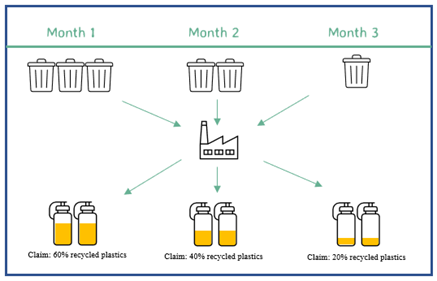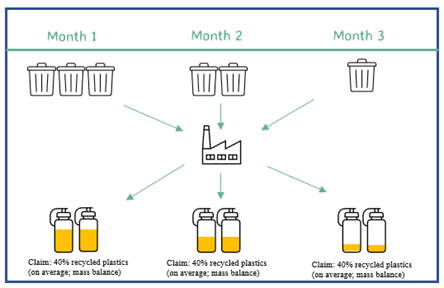How to calculate recycled plastic?
How to calculate recycled plastic?
A number of different methods exist for calculating recycled plastic content in products, covering both mechanical and chemical recycling processes. These methods apply varying approaches for the monitoring of recycled plastics along the plastics value chain, depending on the degree of traceability of materials. The method used will impact the reliability of claims that are made about a product.
What does this mean in practice?
The amount of recycled content that a brand owner can use in their products may vary depending on different factors, such as availability of material or suppliers of recycled plastics – this means that very often the amount of recycled content in a destined product can vary from one period to another.
Based on the methodology used, the amount of recycled plastic incorporated in each product will be reported and claimed differently.


Controlled blending approach
This model focuses on the physical traceability of materials throughout the entire recycling process, which means that at any given time the exact percentage of recycled content is known. When using this calculation method, it is possible to make claims on products such as: “This bottle contains 60% recycled plastic.”
Mass balance approach
With the mass balance model, the focus of calculation is placed on accounting for all input and output materials. However, in this case it is not always possible to ensure the traceability of materials during the process, which means that it can only be concluded that the final product may contain recycled content. As shown in the example a claim of 40% recycled content can be used for a bottle containing 60% or 20%, or no recycled content at all.